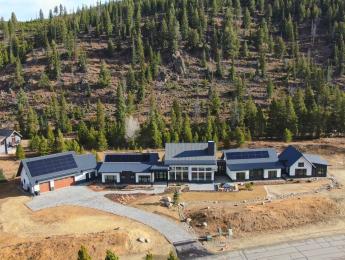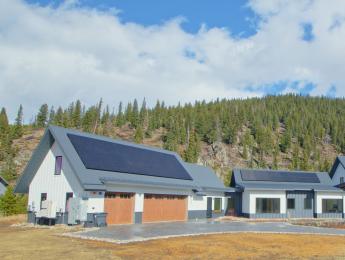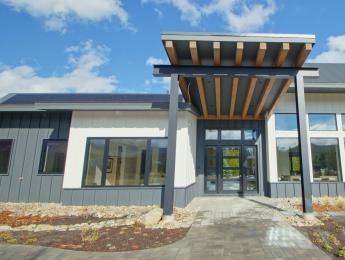Working with Mother Nature
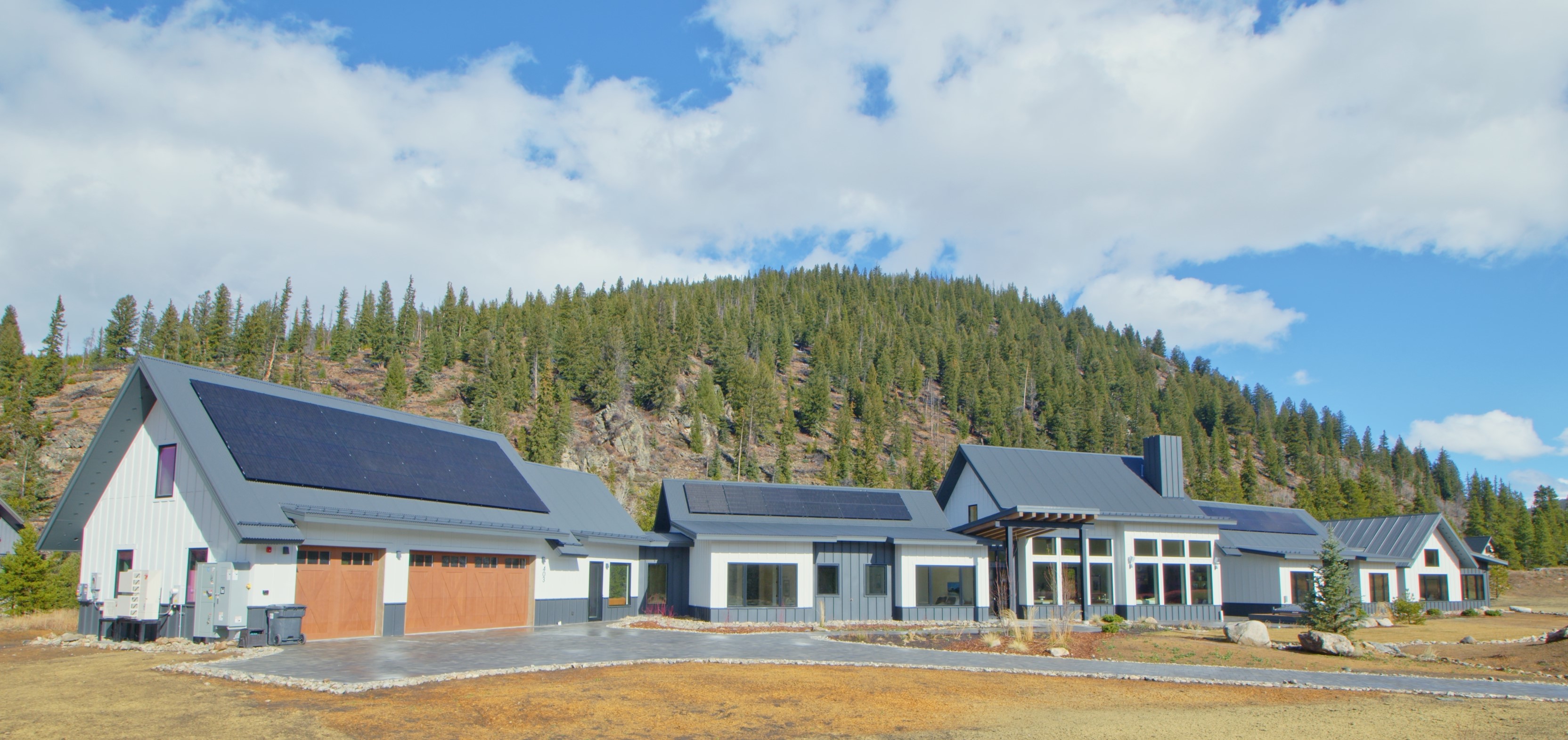
Mitsubishi Electric air-source heat pumps provide comfort for less energy
The location of the Panorama Idea Home, a model of environmental responsibility built by Thrive Home Builders, is a high-altitude retreat with low winter temperatures presenting an extreme challenge, but the harshness of Mother Nature is no problem for this net-zero, carbon neutral, and all-electric luxury home that offers comfort and energy efficiency.
At 9,600 feet above sea level, the Breckenridge, Colo., home required a deliberate strategy to ensure insulation, sealing, and mechanical systems would endure harsh weather while achieving sustainability goals, so Thrive specified Mitsubishi Electric air-source heat pumps with Hyper-Heating INVERTER® (H2i®) technology.
For Thrive, the decision to rely on Mitsubishi Electric heat pumps was backed by experience, science, and a commitment to the environment. “For years we have been using air-source heat pumps with a gas backup,” says Gene Myers, founder, and chief sustainability officer of Thrive Home Builders. “These have been fine, but with our commitment to reduce carbon – especially to go carbon neutral on the Panorama Idea Home – we had to rethink our approach.”
Myers reviewed Mitsubishi Electric’s performance data and learned they can operate beautifully in low and negative ambient temperatures. Two systems set to heat and cool the 6,300-square-foot house are rated at up to 100% heating capacity at 5 degrees F and continue providing warmth when outdoor conditions drop as low as -13 degrees F – well within Breckenridge’s average winter temperatures of 28 degrees daytime and 15 degrees at night.
Selling the system
While Myers was convinced that an all-electric air-source heat pump would be the perfect choice for the Panorama Idea Home, not everyone was on board with the choice.
“At first, it was tough to find someone to install them. The science shows that they work, but the concept of an air-source only system was met with great skepticism,” he notes. In the end, Thrive was able to partner with a contractor who understood the technology and believed in the all-electric vision for the project.
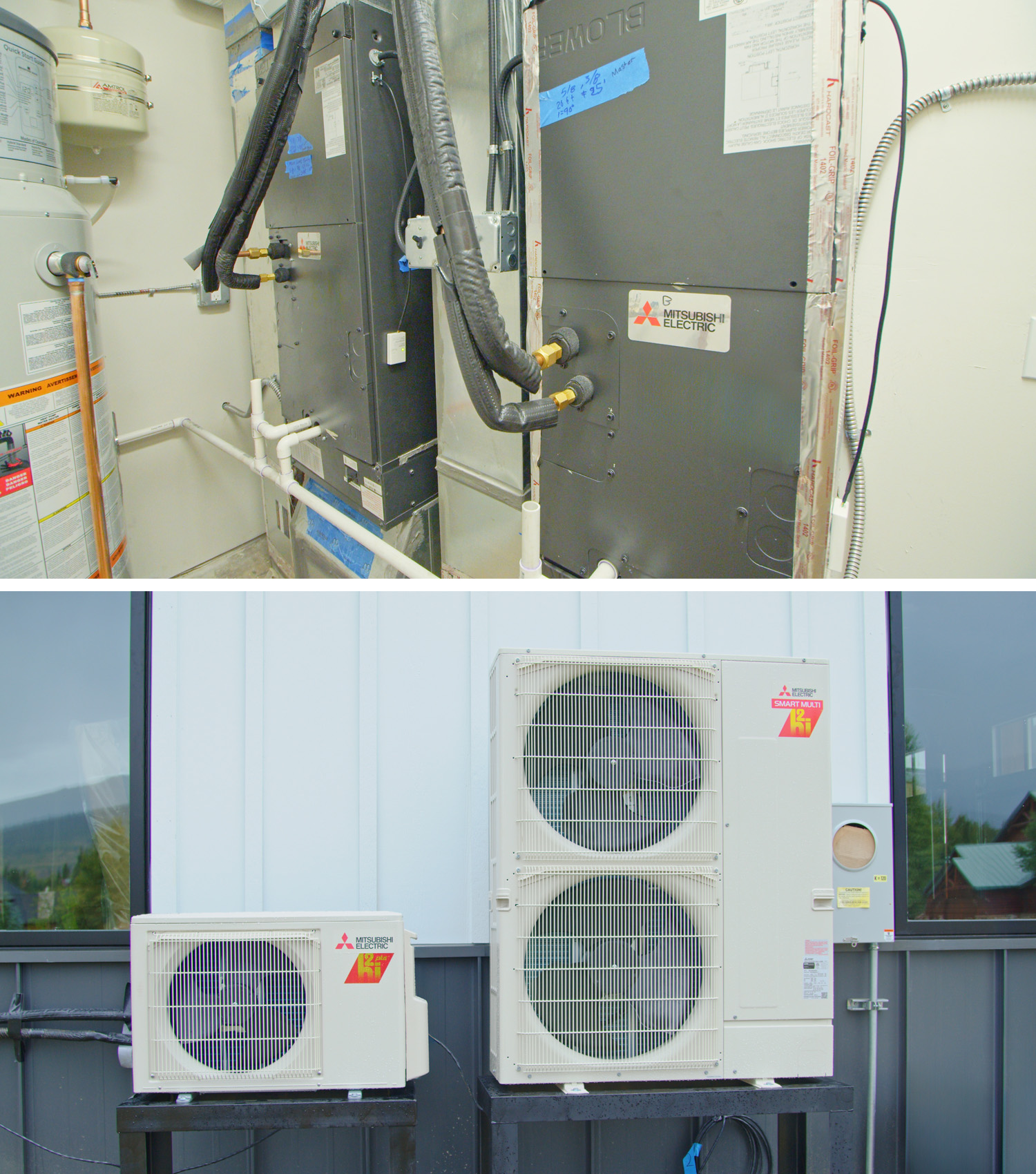
“Mitsubishi Electric tested the system at 11,000 feet elevation on a ski resort and it performed well, even down to -26 degrees, so we’re confident it will keep the occupants comfortable year-around,” he says.
Comfort and energy savings
The four indoor air handlers are connected to the two Hyper-Heating INVERTER® condensers via a branch box. Each condenser can support up to eight indoor units that can include high wall, low wall or ceiling mounted ductless units as well as two varieties of ducted units. The range and variety of styles allow a homeowner to customize comfort options for a specific space for all seasons.
The Mitsubishi Electric system for the Panorama Idea Home is powered by a roof-mounted solar array and a battery storage system. Key technology components of the system are variable-speed inverter-driven compressors. Unlike conventional air-conditioning and heating systems that run at full power until reaching a set temperature, the Mitsubishi Electric inverter-driven system constantly monitors comfort levels within the home and responds proactively to maintain indoor temperatures. By keeping the home closer to the temperature set point, energy is saved by eliminating frequent wasteful starts and stops. According to the U.S. Department of Energy, today's heat pump can reduce electricity use for heating by approximately 65% compared to electric resistance heating such as furnaces and baseboard heaters, lowering energy costs and reducing the home's carbon footprint when the home utilizes grid power.
Built for the Breckenridge climate zone, the outdoor condensers include a factory-installed base pan heater in the drain pan to prevent condensate from freezing and damaging the unit during sub-zero cold snaps.
For the Panorama Idea Home, Myers stresses that comfort and sustainability must meet at the same level.
“It’s our goal as a company to be carbon-neutral and build homes that really move us in the right direction to work on climate change,” he says. “But at the same time, we have to keep the occupant comfortable, even in the coldest of seasons. We feel this system really does both.”
To view other smart home products sign up for the Pro Builder newsletters.
Links and resources:
